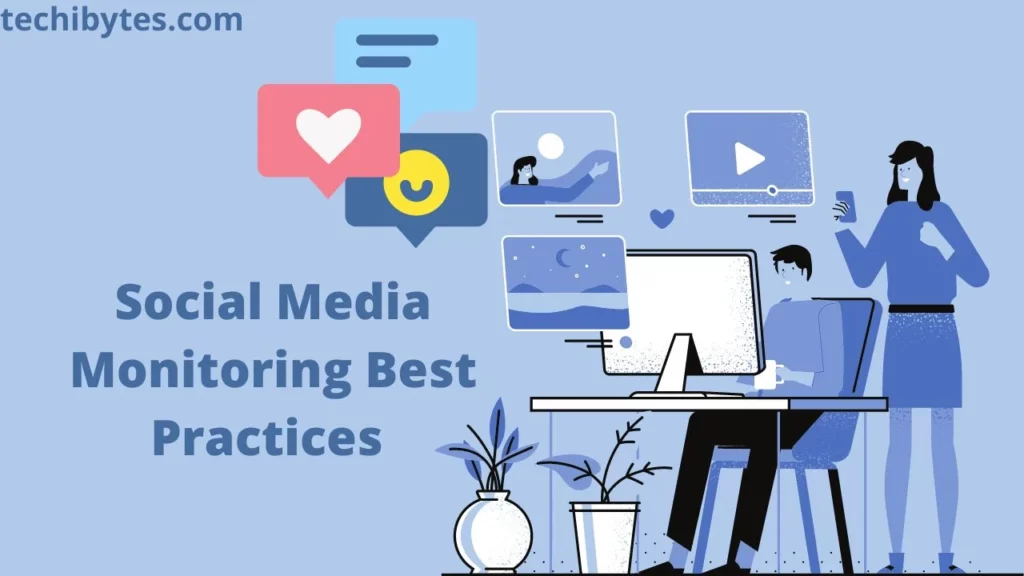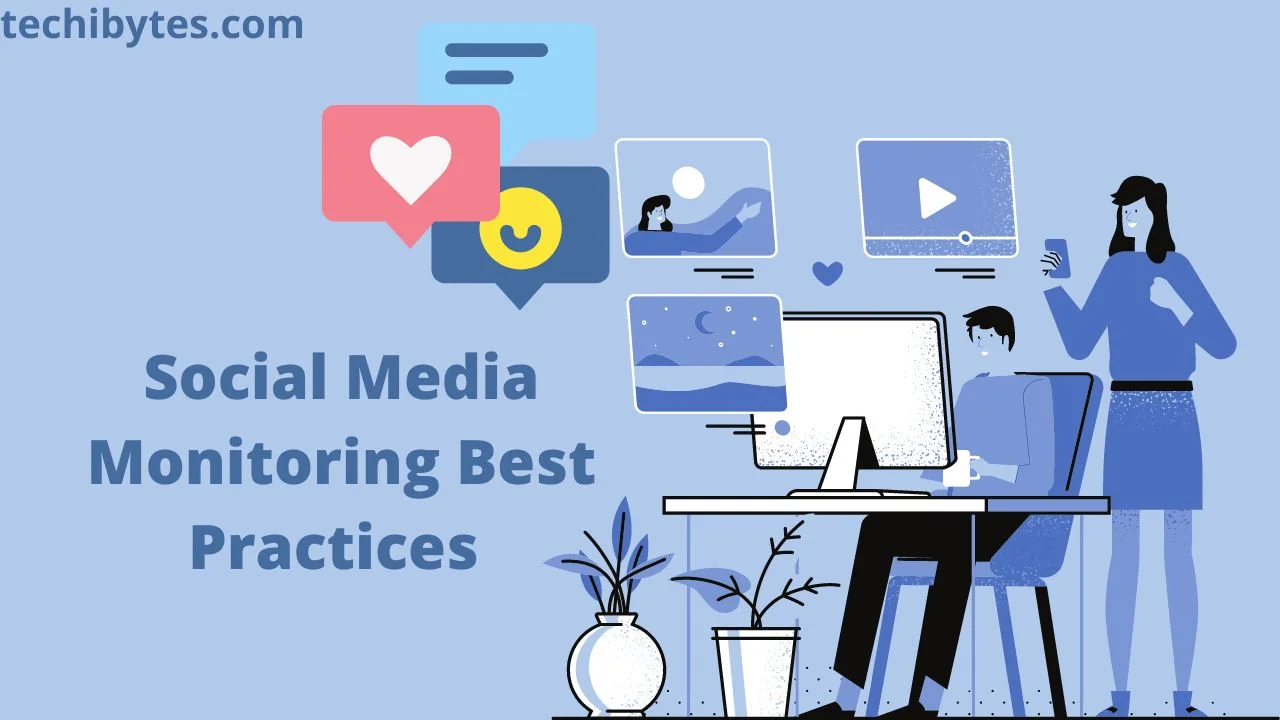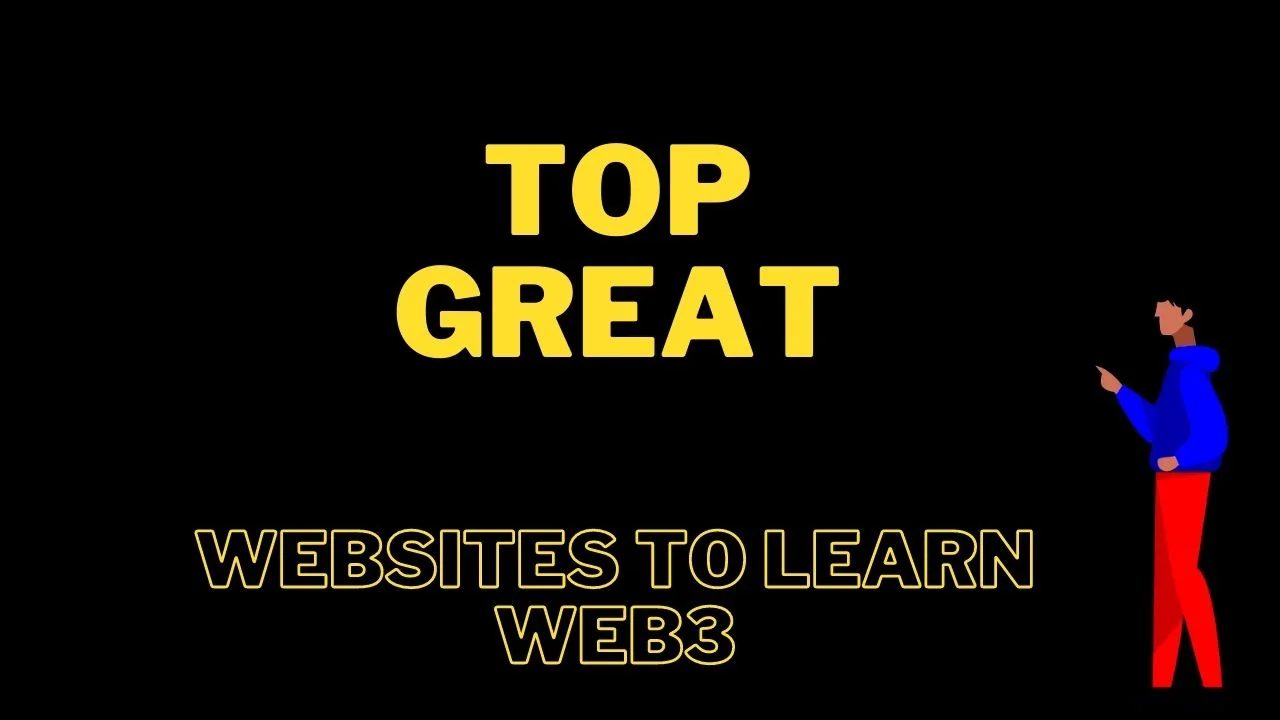Introduction
According to the most recent social media statistics, there are 4.62 billion active social media users in 2022. Given the massive number of potential customers online, brands all over the world have followed suit. They now focus marketing efforts on gaining online followers. Companies can now effectively connect with their audience through social media monitoring.
With 90% of social media users purchasing from brands they follow, any successful business strategy must include social media. Many businesses may believe that social media monitoring consists solely of tracking mentions and responding when prompted. Nothing could be farther from the truth.
In this article, we would break down social media monitoring practices. We have included what it is, how it works and of course, the best practices. Let’s dive right in.
Related: 20 Powerful Best Social Listening Tools
What is Social media monitoring?
The process of identifying what is being said about your brand, or product through various social and online channels is what social media monitoring is all about. Listening to social media can have an impact on how you market your eCommerce business. Businesses use social media monitoring to search digital media channels for keywords or phrases directly related to their brands.
With social media monitoring, there is less limit to what your brand can achieve. Once you’ve established your company’s public perception, you can:
- Respond to customers in real-time on social media platforms.
- Determine how specific demographics perceive your brand.
- Use positive feedback in marketing
- Use negative feedback to help you fix mistakes in your business.
- Increase brand credibility and authenticity.
- Reduce marketing spending by eliminating channels with the lowest level of engagement.
Social media monitoring can provide you with real-time insight into what is being said about your brand. You can gather available data and organize it in a way that works for you. Social monitoring tools can also assist you in increasing online visibility for your eCommerce store. You can respond to what people are saying about your company and reconnect with potential customers through the same social channels. Cool right?
How does Social Media Monitoring Work?
Most social media monitoring tools work by crawling and indexing sites in real-time. After the sites have been indexed, anyone can search them for mentions and opinions about specific products, brands, companies, people, places, and so on. The unstructured data generated by millions of users posting and tweeting every day can help you make more informed, critical decisions.
This is feasible if you can distill millions of posts and tweets into concrete information. You would also have to understand what the users are saying. To understand what they are saying, you must be familiar with all of their communication methods. This includes slang, jargon, acronyms, and abbreviations.
Social media monitoring works in the same way that search engines such as Google and Bing do. The robot searches social media platforms for predefined keywords. This activity is entirely legal and by GDPR.
Powerful Social Media Monitoring Best Practices

Social media monitoring has practices that you must follow to ensure you get the best information. Without this, you would always get the wrong meanings out of the social media monitoring tools. The powerful social media monitoring best practices are-
1. Understand Your Audience
Before you begin tracking keywords, you should be aware of who you are monitoring. Some of the social media mentions may be from segments that have historically not been converted. As a result, their opinions, whether positive or negative for the brand, are unlikely to have an impact on sales or the brand’s reputation.
However, casting a net too wide compromises accuracy and wastes time. To better understand your audience, you can use a social media monitoring platform. You may also use an integrated marketing solution to view your followers’ demographic information. This information includes their gender, age ranges, location, and social media pages they follow.
You can use the data to identify the types of people who are most engaged with your brand and products and group them into segments. Following that, you can observe people in those segments and note their interests. Brands can create a social media monitoring strategy with the segments to track already defined.
See also: 21 Biggest Top Tech companies in the world
2. Monitor brand mentions
Brand mentions are the most important aspect of social media monitoring activities. This is when social media users mention your brand in their posts and comments. Tracking linked mentions are simple because they count in social media notifications. Those without tags or links, particularly those from non-followers, require a social listening tool to detect.
It becomes even more complicated for businesses with multiple locations. As a result, nine out of ten brand mentions go unnoticed. Search for brand mentions with and without links as a useful social media monitoring practice. Language is another possible source of unnoticed mentions in the case of multinational brands.
Brand mentions from other countries may also take the form of foreign characters. It may also have the surrounding context being incomprehensible. Knowing the language translations of your brand and products for the countries you serve is critical.
3. Determine the category to which your brand and products belong.
You cannot use social media monitoring effectively until you determine the category your brand belongs to. FinancesOnline, for example, can track keywords like “software review” or “software search,”. Adidas would most likely monitor “shoe” or “sportswear.” Seeing category mentions informs you of the types of people who might have interest in your offerings.
You can tailor some of your upcoming promotions to their interests or micro-target them with relevant offers. If your brand is aiming for a specific location, narrowing your search to that area can help. You can mention specifics about the product that the region prefers in your promotional and sold goods.
Related: 4 WAYS TO MARKET YOUR BUSINESS ON SOCIAL MEDIA
4. Examine branded hashtags
Hashtags are commonly used in marketing campaigns to expose products to a wider audience. Hashtags are a useful way to generate excitement around brands and assess the success of each event. After all, using them resulted in increased engagement on Twitter and a higher rate of interaction on Instagram for 50% of brands.
As a result, social media marketers prioritize the search for branded and campaign hashtags. Monitoring campaign hashtags can help you quantify the success of a campaign or event. Keep an eye out for promotions such as giveaways or discounts that come with hashtag use, as well as people’s reactions to them.
When performing campaigns, you should not limit yourself to monitoring hashtags as a social media marketing practice. This may result in underrepresented facts and figures. According to a 2020 report, 75% of people are hesitant to use branded hashtags. Instead, 26% prefer to post product reviews on third-party websites. This means you should continue to monitor brand mentions and brand-related terms to gain a better understanding of campaigns. Hashtags are just a bonus.
5. Avoid prioritizing longtail keywords
Longtail keywords are keyword phrases that narrow down regular keywords. For example, you can transform “red sneakers” into “red sneakers with white stripes classic Nike shoes discount.” Searching for phrases like this narrows down social media information encyclopedias. It may then lead to the desired user-generated content. Customers benefit from seeing the items they want faster. This is why longtail keywords account for 70% of internet searches.
So, why should you prioritize less than the other entries on this list? The answer is in the context. There are numerous ways to phrase information, and these variations can result in distinct sets of entries. If you do this, you may exclude many relevant results from your campaign and jeopardize the integrity of your research. Instead, use these searches to supplement your main keyword tracking. Especially if there are too many entries to go through.
6. Use a social media monitoring software
Don’t be shy to use help. There are numerous social media monitoring solutions on the market. We know that finding the best one for your brand’s specific requirements takes time. As a result, we’ve compiled a list of the top three social media monitoring platforms on the market.
- Hubspot Marketing. HubSpot Marketing is a full-service marketing platform. This social media monitoring software automates the majority, if not all, marketing activities. It has custom workflows with automated stages, lead management tools, customizable landing pages, and powerful analytics. The platform also includes an integrated marketing funnel and comprehensive social media monitoring solutions.
- Semrush. Semrush is an SEO software that has a large keyword database. This social media monitoring tool also offers solutions for keyword research, brand monitoring, traffic analysis, and content analysis. It also includes an SEO writing assistant that assists users in optimizing content from the start. It also has a social media tracker that allows marketers to view targeted posts and comments.
- Mayple. Mayple is a multipurpose marketing tool that allows brands to track their campaigns across multiple channels. It provides solutions for digital marketing, marketing strategy development, and live campaign monitoring. Furthermore, the platform allows you to collaborate with vetted professionals. They can assist you with all aspects of marketing and promotion.
7. Determine Influencers
Influencer campaigns may have slowed due to COVID-19, but as the world recovers, so will influencer marketing. And it has made a roaring comeback since most economies have reopened. As a result, the influencer marketing industry should be worth $15.8 billion by the end of 2022, a $4.1 billion increase year on year. Influencer marketing is still very much alive and well. Identifying and leveraging influencers in your industry can do wonders for your brand.
Social media monitoring allows you to distinguish influencers from ordinary posters. Influencers typically stick to their niches. They regularly post content within a specific spectrum and use a consistent set of hashtags.
Read also: Unique Influencer Marketing Strategy Tips and Tricks
8. Set up a unified inbox
Social media monitoring solutions track online mentions as well as centralize messaging across multiple social media platforms. And this is a huge benefit when it comes to responding to customers. According to a recent study, people expect a response from brand messages in 10 minutes or less. This poses a significant challenge to companies with hordes of followers across all social profiles.
A unified inbox consolidates all of these interactions and displays them on a single screen. This gives your agents enough time to provide the best possible response to each query. You can also use a chatbot or a marketing automation solution to make the response process even easier. Additionally, alerts can be set per segment so that responders know which messages to prioritize.
9. Communicate with your customers
There are times when you must directly communicate with your customer base to obtain the information you require. You can respond to top comments and respond quickly to customer inquiries, suggestions, or complaints. After all, being interactive and responsive to your followers increases their likelihood of following you by 21%.
Social media monitoring provides insights into how to craft responses that your customers will appreciate. You can apply a tone that balances fun, warmth, and professionalism. You can do this by observing how your followers communicate and their interests based on their digital interactions.
As a result, your followers will feel more connected to your brand. This leads to increased loyalty, recommendations, and purchases. Some social listening platforms also allow you to group followers and create template responses to help you respond more quickly.
You can also start discussions by posting content that elicits meaningful responses. This could include quizzes, games, or entertaining presentations that require your followers to choose from your product line.
Why Brands Need Social Media Monitoring Practices
There are several reasons why brands need social media monitoring practices. When brands monitor social media, they can-
- Examine direct brand mentions. You can easily react to customer behavior and deliver value at the right time by collecting direct @mentions across social media.
- Examine indirect references. You can find public messages and comments from all over the internet that only include a variation of your brand’s name and no hashtags. This allows you to comprehend the situation.
- Enhance customer service strategies. It can result in faster response times, the prevention of public relations issues, and the identification of brand advocates.
- Improve your customer service strategy
- Increase brand awareness and customer loyalty.
- Respond in real-time to consumer behavior on social platforms
- Determine how certain demographics feel about your brand
- Use positive feedback as social proof in your strategy
- Use negative feedback to solve issues at any stage of the buyer’s journey
- Increase brand credibility and authenticity
- Calculate ROI using advanced reporting capabilities.
Read also: 20 Best business tools for marketing you need
Conclusion
It’s worth noting that 59% of consumers contact businesses after having a positive experience. 47% do for questions, and 40% would like to report a negative experience. People may lose trust in a brand if they are not properly responded to any of these posts. Brands can track these and respond appropriately to posts using social media monitoring. Furthermore, they can identify the precise reasons why people buy from competitors and develop strategies based on those reasons.
Since you’re still here, you could also check out: 17 Unique Best social media platforms for business
If you liked this article, then please subscribe to our YouTube Channel for WordPress video tutorials. You can also find us on Twitter and Facebook










